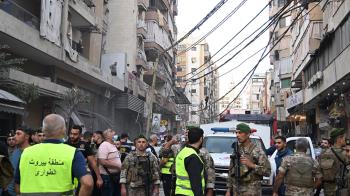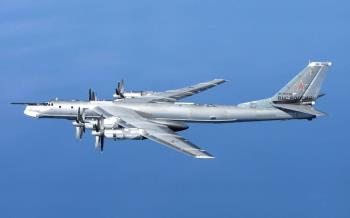ALWAGHT- Pointing out the military, intelligence, and logistical backing provided by certain nations to the Zionist regime during Iran's widespread missile and drone attacks on occupied Palestine, these actions resulted in human casualties and inflicted harm on the Zionist regime’s military assets.
Executing the retaliatory mission "True Promise" against the military installations of the Zionist adversary shattered the perception of Iran's non-response to this regime's actions. The Zionist regime consistently initiated actions without receiving an appropriate reply. Consequently, the Zionist regime did not anticipate a response. However, this operation completely toppled the Israeli regime's calculations and beliefs.
Egypt's mediation during the "True Promise" operation
Subsequent to the Islamic Republic of Iran's declaration affirming the conclusive nature of its retaliatory action following the terrorist assault by the Zionist regime on the Iranian consulate in Damascus, endeavors were undertaken to dissuade Tehran from abstaining from retaliation or restricting its response minimally against the Zionist regime.
Conversely, endeavors were made to dissuade Iran from retaliatory measures by providing specific concessions, to the extent that shortly before the "True Promise" operation, a proposition was raised via Egypt. Iran's response indicated that the decision to execute the operation had already been finalized.
The response was solely disciplinary
The operation's scope was restricted as it was solely designed for punitive purposes. Consequently, there were limitations on both the number and selection of targets, resulting in only those directly implicated in the consulate attack being chosen.
The operation's primary aim was to engage the enemy with precise attacks, targeting their air and defense capabilities. Despite these constraints, the operation remained within its intended scope.
Several nations extended military, intelligence, and operational support to the Zionist regime during the operation. Nonetheless, numerous enemy fighters were occupied for hours countering Iran's retaliatory attack. Some of the weaponry deployed in the operation served to distract and disorient enemy aircraft and defenses, thwarting their interception of designated targets.
The similarity between operation "True Promise" and operation "Al-Aqsa Storm"
Given that the most notable aspect of operation "True Promise" was its targeting of key positions held by the Zionist adversary, this triumph can be seen as a strategic one, akin to the resistance efforts in Palestine on October 7th (Operation Al-Aqsa Storm), which marked a strategic win for the resistance against the adversary and dealt a severe blow.
Additionally, only bases in specific provinces, including those in the western regions of the country, were engaged in this operation. Despite the potential to utilize all bases nationwide, actions were restricted to provinces such as Fars, Khuzestan, Isfahan, Central Province, Zanjan, Kermanshah, and East Azerbaijan, underscoring the symbolic nature of participation in this operation.
Human casualties and equipment damage inflicted on the enemy
According to reliable sources, in this operation, the enemy not only endured human casualties but also lost some of its military aircraft. In an attempt to censor the extent of its losses, the enemy shut down the internet and prevented journalists from accessing the locations targeted by Iranian missiles and drones, relocating damaged equipment in the days following the operation.
During the punitive "True Promise" operation, the Islamic Republic of Iran struck the "Nevatim Airbase," which is the enemy's largest airbase equipped with the most powerful anti-aircraft and missile defense systems.
Iran employed a combination of drones, cruise missiles, and ballistic missiles in this operation, with the sole mission of confusing and engaging the enemy.
The defensive barrier of the enemy is highly vulnerable
Due to constraints in target selection and response during the "True Promise" operation, only a fraction of the immediate force capabilities of Iran were employed. Nonetheless, if needed, over five times the current amount of equipment and weapons could be deployed.
Additionally, it was noted that the enemy's anti-aircraft and missile defense barrier crumbles even with less weaponry than what was utilized in the "True Promise" operation. Should this operation persist, subsequent missiles would reach their targets unhindered.



























